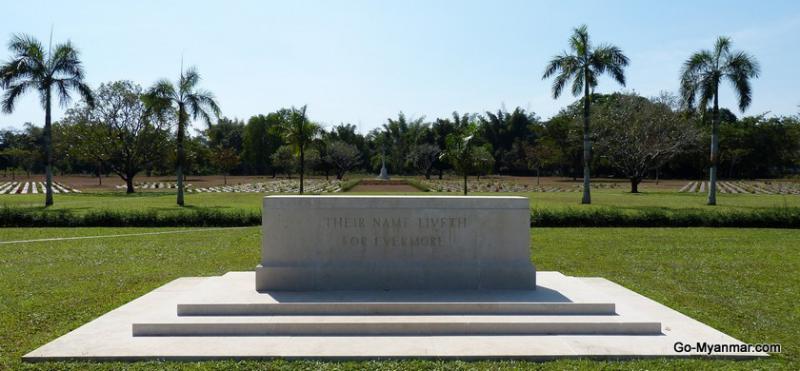Heading south on the road from Mawlamyine towards Dawei and the tropical Tenasserim hills, there are two moving memorials to the loss inflicted on Allied forces during the Second World War whilst building the infamous Burma Railway.
Often dubbed the ‘Death Railway’, the 424 kilometre-long line was constructed using forced labour in hellish conditions in order to secure Japanese supply lines. Two labour forces worked on the railway from either end – one from Ban Pong in Thailand, and the other from what is now an otherwise unremarkable market town in central Mon State, Thanbyuzayat.

The Allied War Memorial Cemetery
The first commemoration of the fallen is the beautifully maintained Allied War Memorial Cemetery; originally built by the Army Graves Service to lay to rest those who had perished along the northern section of the Burma Railway, it is now the responsibility of the Commonwealth War Graves Commission. Although foreigners only head to this part of Myanmar in small numbers (if you visit, you are unlikely to encounter anyone else other than the friendly old groundkeeper, who will greet you in broken English), the cemetery is meticulously tended to, with grass, trees and flowers all neatly pruned – and verdant, staying well watered even in the heat of the dry season.
An estimated 13,000 allied prisoners of war died during the construction of the Burma Railway, of which just under 3,000 are buried at the cemetery in Thanbyuzayat. The bodies of Americans were repatriated, but the graves of soldiers from a number of other countries, including Australia, the UK, the Netherlands, India and a number of Commonwealth countries can be found here.
Being at the memorial cemetery is a sobering experience. After you pass through the large entrance gate, you are faced with a white stone slab which says, simply, ‘Their name liveth for evermore’. And as you wend your way through the uniformly-designed metal grave headstones, which are laid out in a huge semi circle between the entrance and a large stone cross at the back of the site, you will find that many carry personal – and affecting – messages. Some of the names are notable for their distinctiveness and bring real character; a personal favourite of mine was a machine gunner named TJ Fury – what a name! But the wide variety of nations and cultures you will find reflected in the names reflects the global horror wrought in this corner of Southeast Asia – and possibly even more moving are the sheer number of graves belonging to the unidentified dead, simply marked ‘A Soldier Of The War, known unto God’.

The end of the line
Around 2km south of the cemetery is a smaller memorial site that marks the western end of the Burma Railway itself (a short drive or long walk through the town of Thanbyuzayat – its streets lined with shops and simple teahouses). Just beyond a level crossing where the main road southwards crosses the Yangon to Dawei railway line, you will find an old, lone steam locomotive that has been placed on an isolated section of track to memorialise the events that took place here; it is surrounded by the eerie, broken remnants of stone statues of soldiers. A few metres further down the track is a sign that reads ‘Myanmar Thailand Japanese Death Railway line starts here 1942-1943’.
There is talk of sprucing up the area and opening a museum – and if they do as thorough and sensitive a job as at the other end of the Burma Railway at Kanchanaburi in Thailand, then that should be welcomed*. But for the moment, Thanbyuzayat remains a quietly atmospheric addition to a trip down south.
We offer a dedicated railway tour of Myanmar which takes in Thanbyuzayat, as well as the train journey to Mandalay and the famous Gokteik Gorge on the route from Pyin U Lwin to Hsipaw. For tour highlights, itinerary details and pricing, go here.
For a wider range of photos from Thanbyuzayat, go to our Flickr photo album and for more information on rail travel in Myanmar, go here.
Marcus Allender – founder, Go-Myanmar.com. July 2015
*January 2016 update: a Death Railway Museum has been opened in Thanbyuzayat, but it is a purely commerical venture and has not been well received by those interested in historical insight or respectful commemoration.







